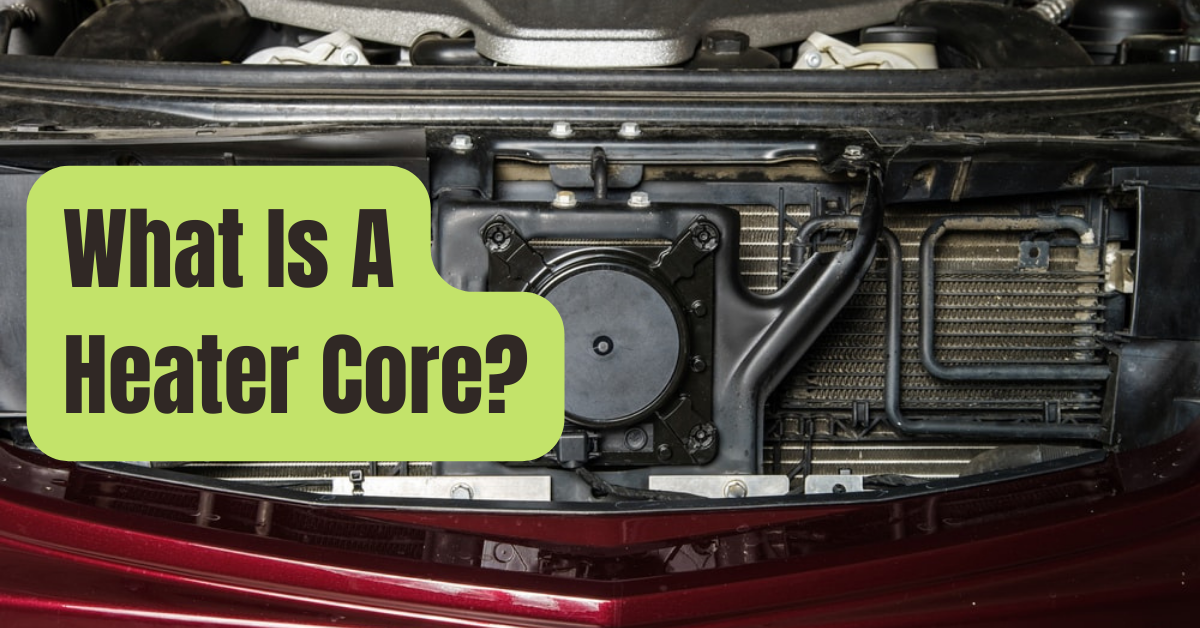The cooling system of an automobile includes the heater core.
It has the appearance and functionality of a smaller radiator and radiates heat into the cabin by moving coolant via the tiny tubes.
It is connected to the air conditioning system, which is built on similar principles, and is in charge of enabling the defroster to operate correctly.
The antifreeze/coolant in an automobile engine absorbs heat as it heats up and circulates around the engine and through the radiator to cool it below the boiling point.
The thermostat regulates the temperature of the whole system.
When the heat in your automobile is turned on, air is blown over the heater core, where it is warmed before entering the cabin.
Some cars include a heater valve that, when the heat is on, sends coolant through the heater core and, when the heat is off, bypasses the heater core.
In certain cars, the amount of air forced over the heater core determines how hot the air is within the air blend box.
With dual zone climate control systems, the driver and front-seat passenger may independently manage the cabin’s temperature thanks to a split heater core.
Some big SUVs and high-end luxury vehicles include an additional heater core that enables the back passengers to choose their own temperature.
The surfaces within the cooling system, especially the heater core, are protected from corrosion by corrosion inhibitors included in coolant/antifreeze.
The cooling system may get rusted, contaminated, and even begin to leak if the corrosion inhibitors run out.
When coolant or antifreeze leaks from the heater core, the system’s overall coolant level will be low, putting the engine at risk of overheating, which is the most frequent reason for mechanical failure.
Because it can no longer measure the temperature of the now-empty water pipes, the warning light or temperature gauge may not even signal a problem in the absence of coolant.
Therefore, it’s crucial to be aware of the five indications of a leaking heater core.
#1. Your Car Has a Sweet Smell
You could detect a pleasant odor coming from your vents.
This scent, which comes from your radiator fluid, indicates that coolant is dripping into your automobile.
It’s time to check beneath your car to see how much coolant has leaked out into the ground, especially if you can smell it around the exterior of your car.
#2. The Windows Of Your Automobile Fog Up.
When your car’s interior fogs up unexpectedly, it’s often a sign of a heater core issue.
It’s vital to note that what we want to see is every window become coated with warm, wet condensation rather than just a thin layer of mist on the border of the windshield.
Warm coolant that has leaked into the car’s interior and turned into steam when it came in contact with the colder air inside is to blame for the fog.
#3. The Inside Of Your Automobile Is Being Blown With Frigid Air.
All that warm air may leave the heater core too rapidly to reach you at the other end of the heater ducts if a hole or puncture forms there.
You may experience pleasantly warm, tepid, or downright frigid air escaping from your heater, depending on the extent of the puncture.
#4. Coolant Is Consuming Your Automobile.
If your car needs more coolant than normal all of a sudden and you can’t figure out why, it might have a blown heater core.
If the leak is difficult to locate, coolant may seep into your cabin while the system is cold and is producing a puddle rather than fog.
To check whether the floor is moist, look at the passenger-side.
#5. The Engine Of Your Automobile Is Hot, Yet The Inside Is Chilly.
Your automobile suffers severe damage from overheating.
When your car’s primary components become too hot, they start to wear down and malfunction very quickly.
You should inspect the condition of your heater core if your car has overheated or is still overheating, but keep in mind that many other components of the automobile may also be to blame.
If your heater suddenly stops producing heat but your engine is still warm, check to see if your automobile has any other problems, such as a coolant leak.
The heater core of the automobile requires little to no maintenance, but you should be sure to check the hoses carrying the coolant to it on a regular basis, about every 6,000 miles or six months.
Making ensuring your coolant has adequate corrosion inhibitors active to safeguard the system means changing your coolant/antifreeze as instructed by the manufacturer of your car.
Additionally, preventing an emergency may be accomplished by promptly fixing any leaks and checking hoses for indications of internal damage.
You may get assistance from State Street Auto Repair in figuring out when cooling system maintenance has to be done.










